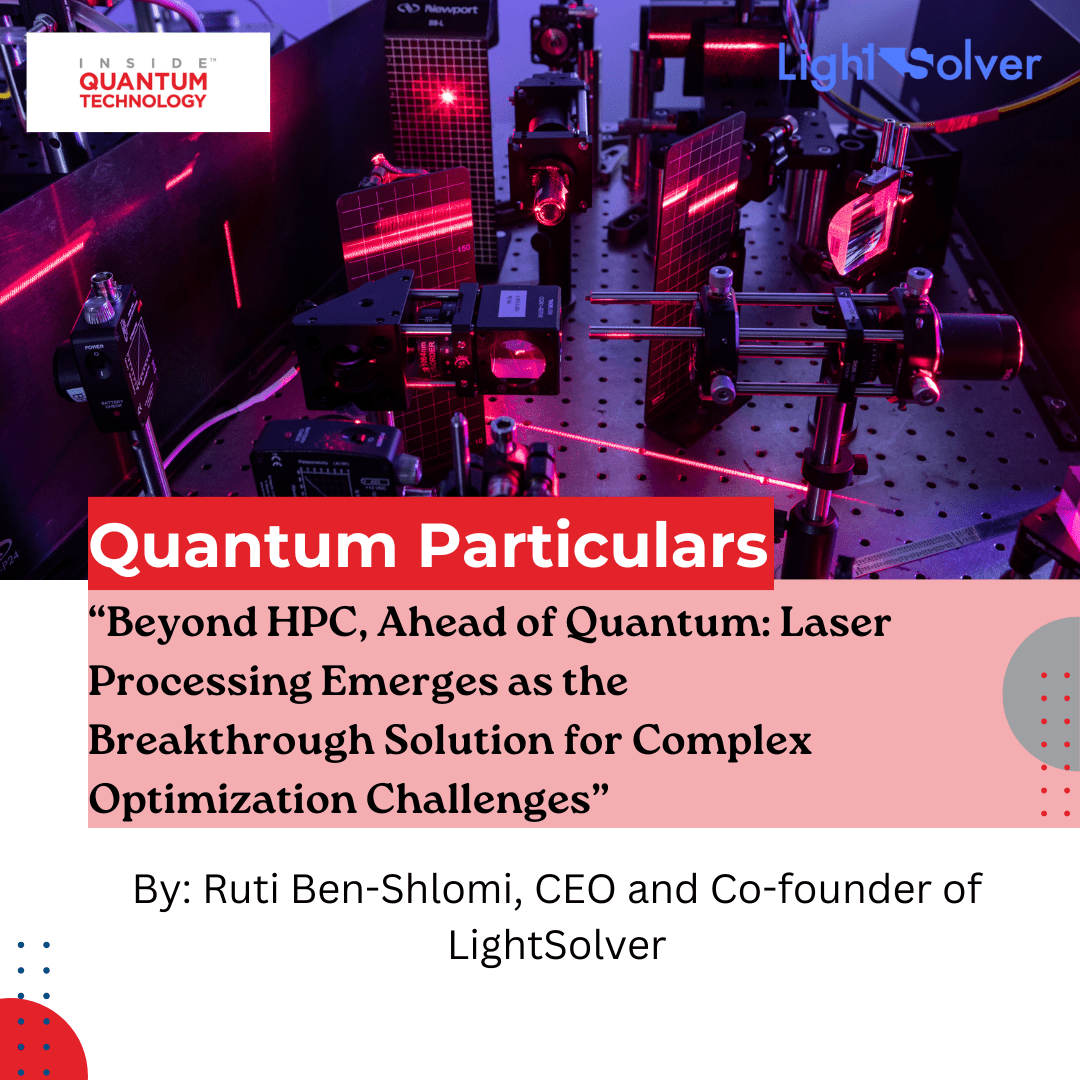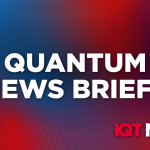Quantum Particulars Guest Column: “Beyond HPC, Ahead of Quantum: Laser Processing Emerges as the Breakthrough Solution for Complex Optimization Challenges”

“Quantum Particulars” is an editorial guest column featuring exclusive insights and interviews with quantum researchers, developers, and experts looking at key challenges and processes in this field. This article, written by Ruti Ben-Shlomi, the CEO and Co-founder of LightSolver, focuses on laser processing as an advantage of quantum computing.
Businesses are constantly looking to improve efficiency, increase productivity, and reduce costs. In many cases, however, achieving these goals hinges on rigorous optimization capabilities. Take last-mile delivery for example, or dispatching a team of service technicians to hundreds of locations: To create highly efficient routes and schedules, businesses must solve combinatorial optimization problems. The challenge with this type of calculation is that they are NP-hard, which means that they increase exponentially as the number of variables and constraints grows. For example, there are more than 1094 ways of allocating 10 jobs among a team of seven field service technicians – a problem size that exceeds the capabilities of current computers.
While classical supercomputers seem to have reached their computational limit, quantum computers are not yet scalable or practical for solving complex real-world problems. What we need is a better method of solving such problems now – and not just logistics challenges, but problems running the gamut from financial portfolio optimization and risk modeling improvement to drug discovery and enhanced material science.
Fortunately, there is a new quantum-inspired technology available today that harnesses the power of lasers to compute faster than the most powerful classical and quantum computers. This new computing paradigm is free of electronic components, promises to transcend the limitations of classical high-performance computing (HPC) and offers a more practical solution than quantum computing for solving complicated optimization problems.
Beyond the Limits of HPC and Quantum
Classical computers address optimization problems using approximation techniques, resulting in solutions of compromised quality and processing times that increase exponentially with the problem’s size, quickly exceeding the upper limits of today’s HPCs. Even the most powerful supercomputers, boasting a performance surpassing a hundred quadrillion FLOPS, may hit a wall and also require unsustainable amounts of power and cooling. As a result, many businesses can’t leverage the abundance of data that is available today and truly enhance their business.
Quantum computers show great promise but are not yet affordable or scalable. They also have non-trivial engineering challenges, such as the need for ultra-high vacuum environments, specialized components, and intricate stabilization systems involving ultra-cold conditions. Despite efforts to address these demanding requirements, quantum computers remain prone to errors and a corresponding decrease in reliability and accuracy.
Some quantum annealers are now available in the cloud, but most of them suffer performance and scalability challenges due to limited connectivity, which hinders their ability to efficiently tackle complex real-world problems.
A Bright Solution via Laser
Laser processing is a novel computing paradigm that employs coupled lasers for computational tasks. It requires no electronic components and offers numerous advantages over conventional computing approaches, such as faster processing speed, enhanced accuracy, low power consumption, scalability, and operation in ambient conditions.
How Does It Work?
Lasers can solve math problems that can be expressed as a quadratic unconstrained binary optimization (QUBO) or Ising model. Laser computing works by encoding the constraints of the problem into the relative phases of the lasers. The phase states then interact by diffracting light from and between each laser in a controllable way, facilitated by a tightly coupled laser array. This design ensures complete connectivity among all lasers, enabling pairwise all-to-all spin interactions within a desktop-sized device.
Owing to the wave nature of lasers and a specialized mapping process, the laser beams converge seamlessly towards the minimal-energy-loss state that corresponds to the problem’s solution and that can be read by a camera. Best of all, similar to quantum computers, lasers can compute different solutions in parallel, thus calculating results at the speed of light, significantly faster than other techniques.
Unlike quantum systems though, a laser-based supercomputer is not sensitive to environmental conditions and does not need to run in an ultra-high vacuum. It also demonstrates remarkable scalability without requiring an increase in device size. The compact size of laser processing solutions, which are built with readily available commercial components, facilitates their accessibility as well. All of these benefits pave the way for broader adoption, not just for on-prem applications, but also IoT use cases like autonomous vehicles, as well as field deployment on oil rigs and other remote locations.
Looking Ahead at Laser Processing
In recent benchmarks, laser processing has demonstrated its ability to solve NP-hard problems. This is a monumental achievement, giving an early indication that laser processing has massive computing potential. As it continues to develop and evolve, it could revolutionize the field of computing and solve problems that were once thought unsolvable.
Big tech companies such as IBM, Microsoft and Google are hastily racing to build reliable quantum computers, but this new paradigm utilizing existing, proven laser technology is solving real-world problems today. It can help companies conserve resources, increase revenue, and reduce energy consumption, capabilities that are sorely needed in the current economically challenging climate. Laser processing is becoming an integral part of the supercomputing landscape, and is well-positioned to outpace both HPC and quantum computing in the coming years.
Ruti Ben-Shlomi, PhD, is a physicist and the CEO of LightSolver, which she co-founded with Dr. Chene Tradonsky in 2020 after inventing the first LPU. Prior to LightSolver, Ruti received her PhD in quantum and atomic/molecular physics in 2019 from the Weizmann Institute of Science in Israel. In 2011, she received her MSc in physics from Ben-Gurion University of the Negev after designing and building an ultracold atoms system from scratch. Between degrees, Ruti served as a process engineer for Intel.



















